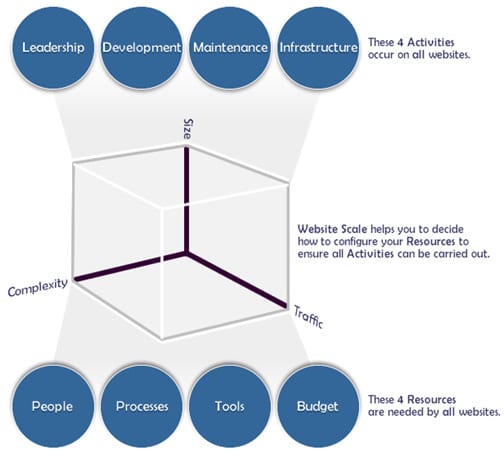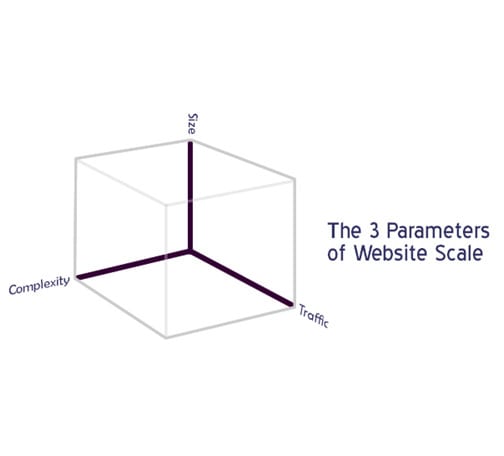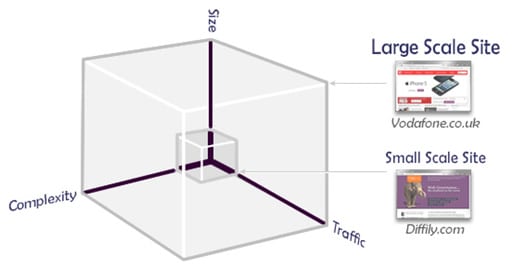A practical guide to help you manage your website more effectively
Web Governance is the discipline that describes how to manage a website in a controlled and orderly way. Until quite recently few online professionals were interested in Governance. There were too many other problems that needed fixing first, like poor design and content. But not any more!
A new generation of Executives for whom the web is neither cool nor cryptic are lifting the lid on operations and discovering teams that are poorly structured and under-resourced. What is the answer? To set things right, they need a practical Framework upon which to build a revised system of Web Governance.
In this article we’ll explore a new model that explains in clear language how Governance works and a first step towards changing it for the better which can be applied to companies of different sizes.
A new system of Web Governance
At its most basic, governance can defined in terms of just 3 components:
- Governance Activities: describes everything you must do to manage a website effectively.
- Governance Resources: describes everything you must have to support the above activities
- Website Scale: concept to determine how to configure the above Activities & Resources into a workable system of Governance.

Access more information on the Governance Activities, Resources and Scale
The power of this definition is that it's applicable to any online venture, no matter what it is about or how big (or small) it is. The only difference is that the granularity and sophistication by which the 'Activities and Resources' are carried out varies as a factor of ‘Scale’.
What is this? ''Website Scale' is a means of describing a site in terms of its size, traffic and technical complexity.

In short, the bigger, busier and more complex a site is, the more detailed and sophisticated are the 'Activities and Resources' needed to support it.
Case studies from Vodafone and Diffily
For example, consider the Web Governance needs of two businesses at the opposite ends of the online spectrum: Vodafone.co.uk and Diffily.com

Vodafone’s online presence is massive. It comprises huge amounts of content, attracts well over 1m visitors per month and is built on highly complex technology.
Then we have Diffily.com. It has less than 50 pages of content, attracts low traffic numbers and is built on a basic brochureware-system.
Yet, despite these enormous differences in scale, both sites need to carry out the same basic Governance Activities (maintenance, development, etc.) and provide the same core resources (people, tools, etc.) to make things happen.
For Vodafone this means it has to hire a full-time team of skilled professionals and buy expensive software to support continuous publishing. In contrast, Diffily.com can get away with simply asking a student to update the site once a week in exchange for a few quid pocket-money.
So we see that while the core 'Activities and Resources' on both sites are the same - the granularity and sophistication by which they are implemented differs hugely.
That is why 'Website Scale' is such a powerful tool for Web Governance. It enables us to recognise and plan for these differences in a structured and predictable way.
Different sites but the same 'Scale'?
Yet, perhaps the greatest benefit of' Website Scale' is that allows us to identify common patterns of Governance among sites that share the same metrics for size, traffic & complexity - even if those sites are focussed on very different audiences.
Take the example of the Cancer Charity Macmillan and the High Street Retailer BHS. You may think that they are so distinct that each requires quite a different solution in terms of Governance.

However, when examined more closely we find that they are both large in size, they generate a lot of online activity and use highly complex technology. In a sense, it does not matter that these sites have different content and objectives - they are so similar in 'Scale' that they deal with essentially the same Governance problem.
As a result, we can examine them to identify commonalities in how they address such fundamental questions are:
- What skills do I need?
- How many people should I hire?
- How should I structure my team?
What is interesting is that the same patterns of Governance are seen again and again among sites of a similar 'Scale'. For example, Web Governance on 'Mid-Large Scale' websites (like Macmillan & BHS) often reflect the clustering of staff, skills & team structure illustrated below.

What this means for your business?
If you need to create a new system of Web Governance for your own site (or update one already in place), you don't have to start from scratch. Simply work out the 'Scale' of your site and then refer to examples of Governance that already exist.
With this in mind, I recommend the following steps for anyone looking to reset their Web Governance.
3 Steps to meet Web Governance for your site
- 1. Establish the ‘Scale’ of your site.
Find out where you fit in terms of 'Website Scale'. Are you big, busy and complex or some other mix of 'Scale'? Who are your peers and how do they address the challenge of Governance?
- 2. Check the granularity & sophistication of your 'Activities and Resources'.
Do they match the 'Scale' of your site? For example, if you find that essential tasks are being overlooked or if you rely excessively on external contractors, it probably means your team is under-resourced.
- 3. Talk to Senior Management
Use your findings and the model of Web Governance (described above) to approach Senior Managers to explain what is wrong. They then have two choices:
- Invest more in Governance to match the 'Scale' of the site.
- Reduce the 'Scale' of the site to match available investment.
Summary
The first step in changing Web Governance is often the hardest. Indeed, there is ample evidence to suggest that issues with politics in many organisations have resulted in Governance systems that are extremely resistant to reform.
Nevertheless, change must happen eventually. The model outlined above provides a starting point for this conversation.

Thanks to
Shane Diffily for sharing his advice and opinions in this post. Shane is an experienced Web Governance consultant and author of ‘
The Website Manager’s Handbook’ - the first practical guide to online management. You can follow Shane on
Twitter or connect via
LinkedIn.













